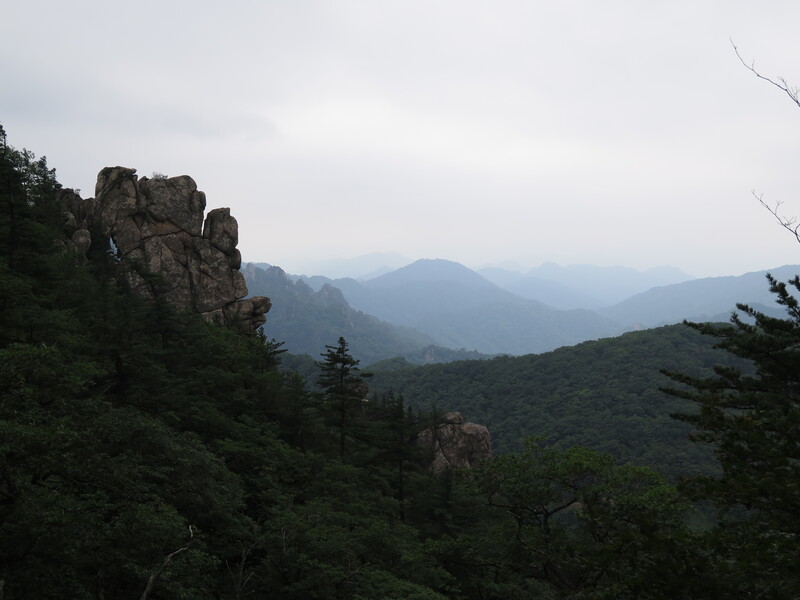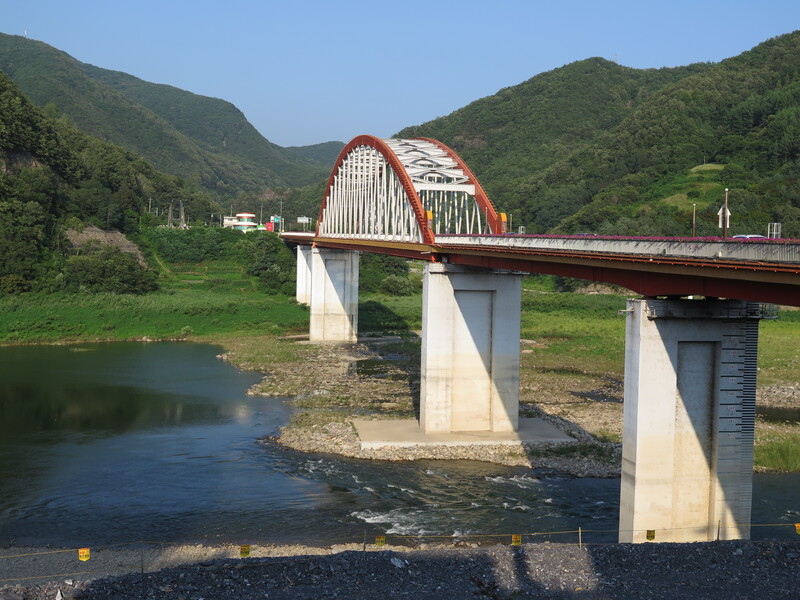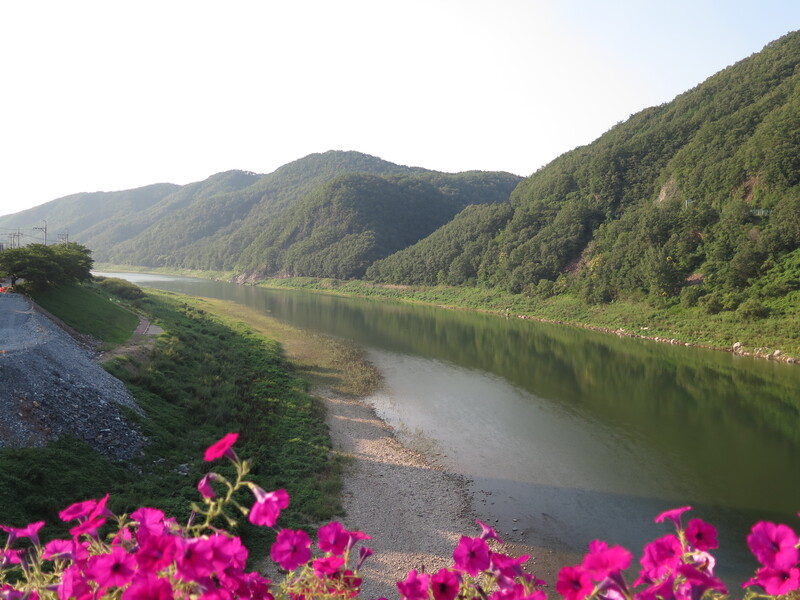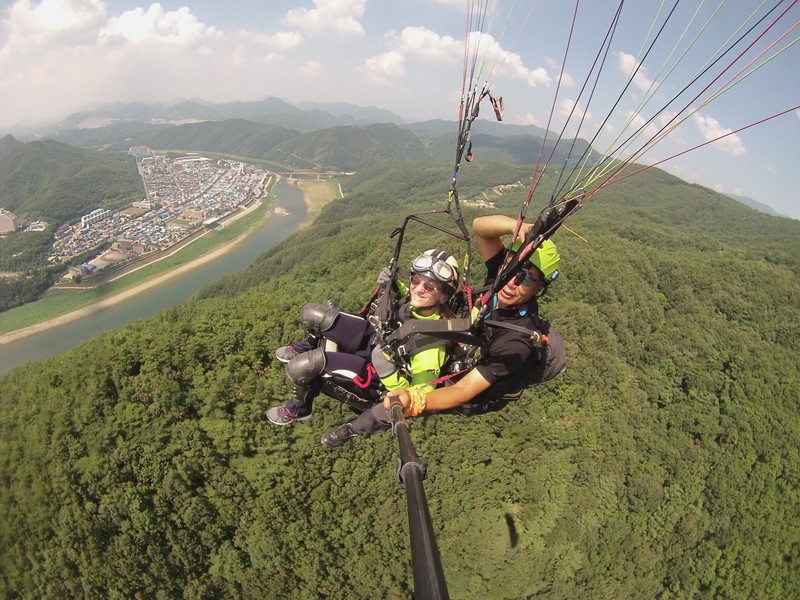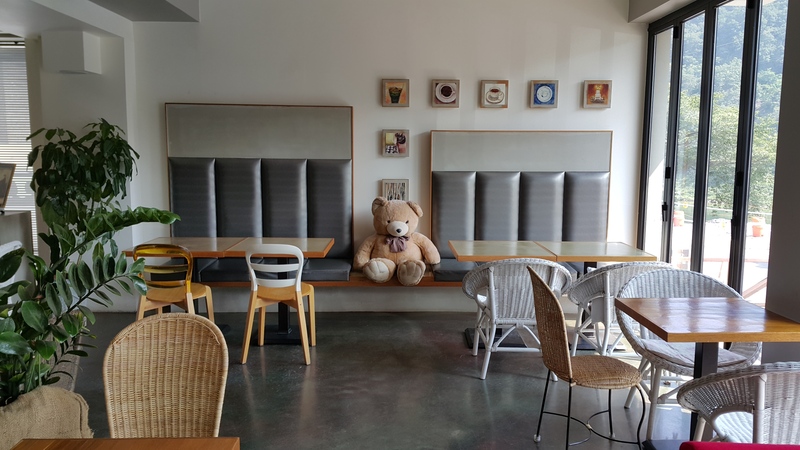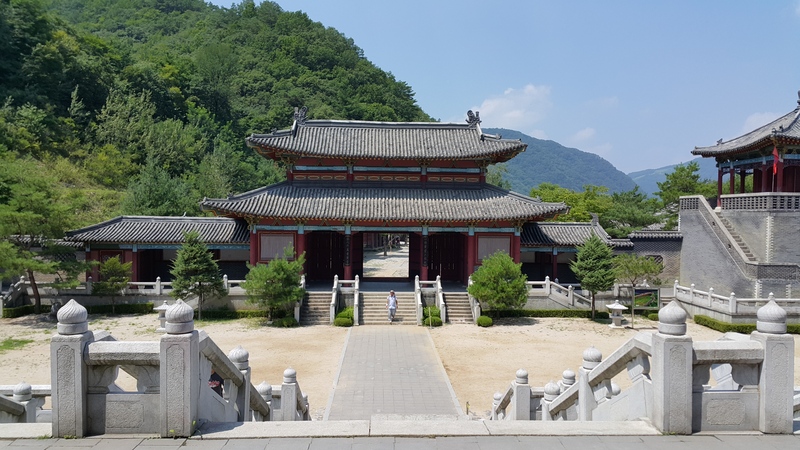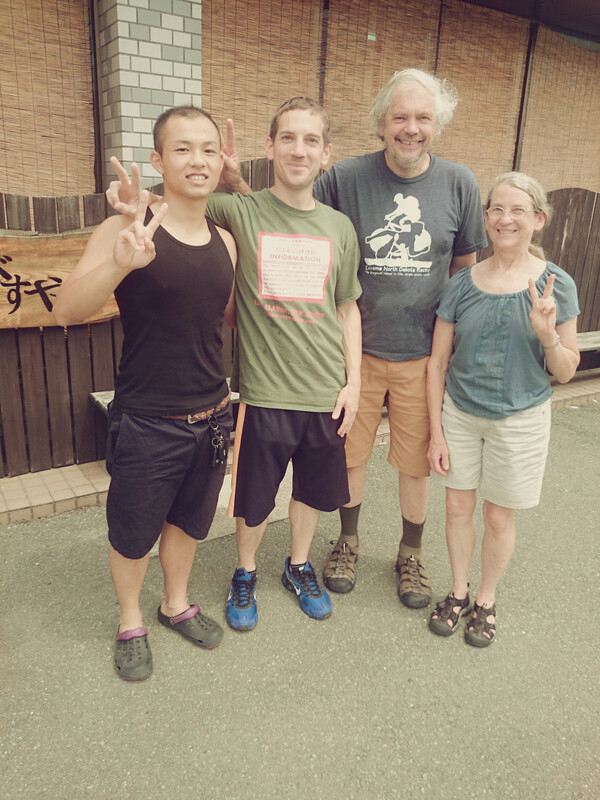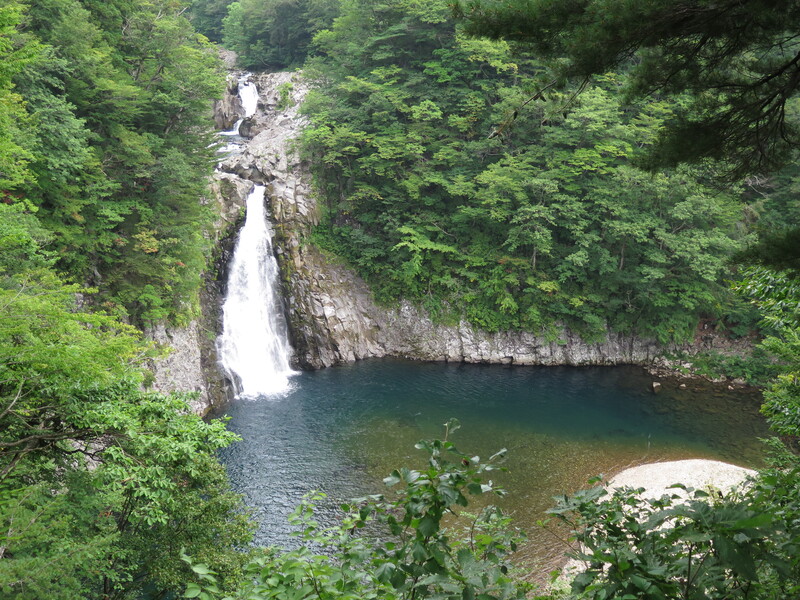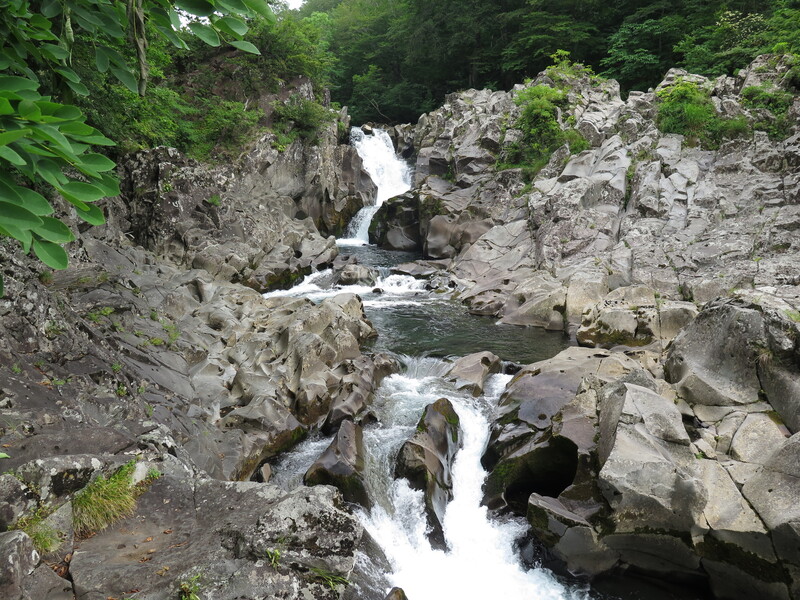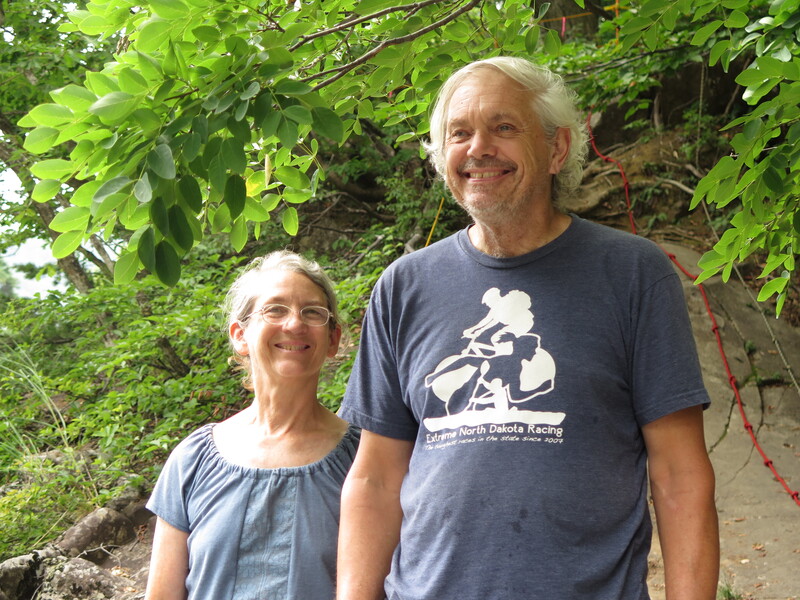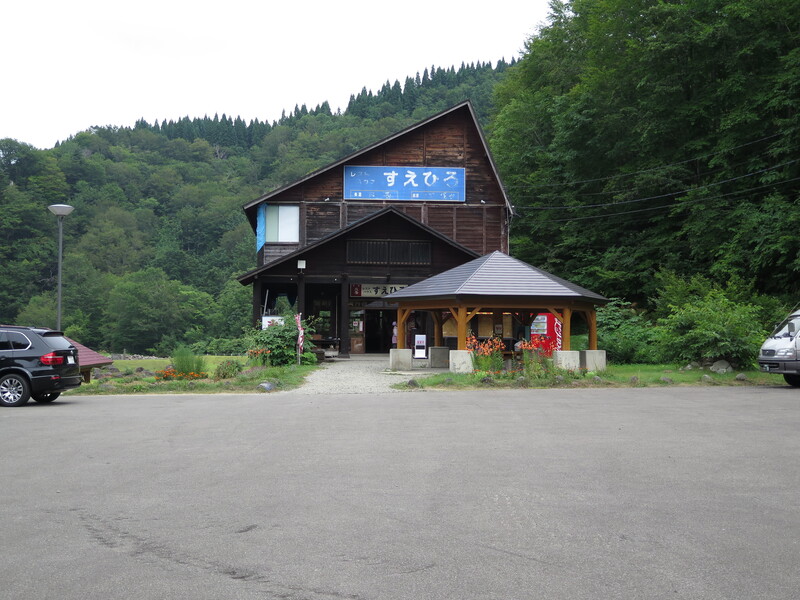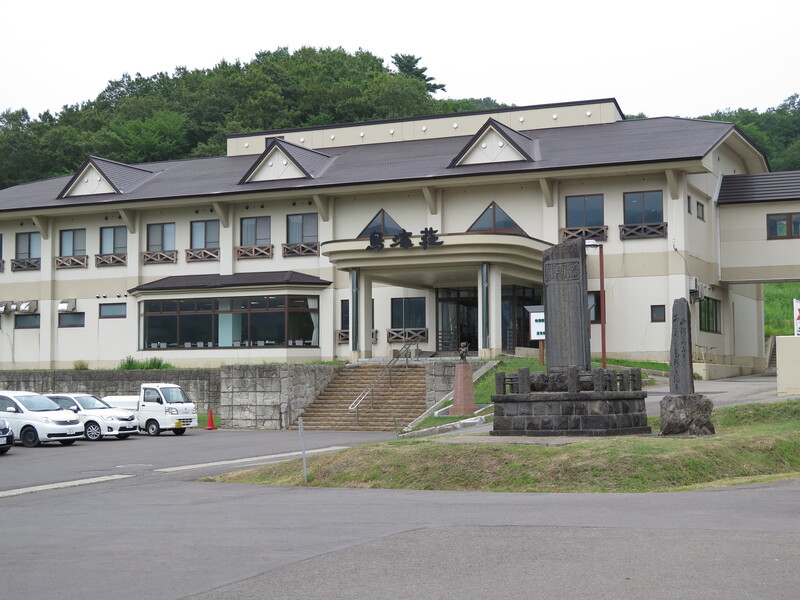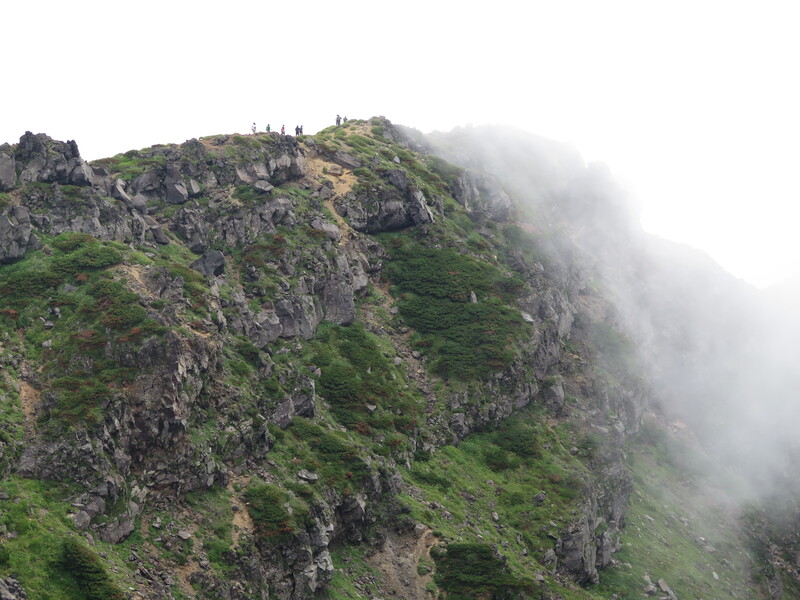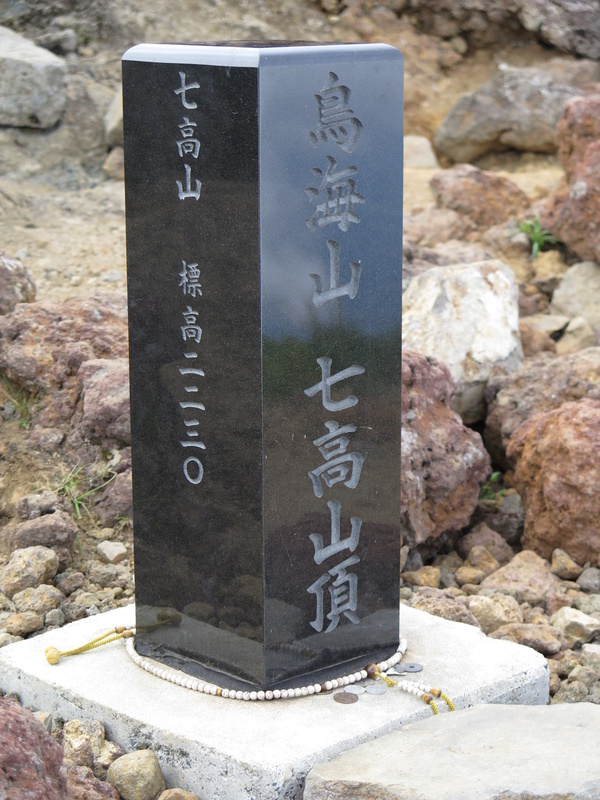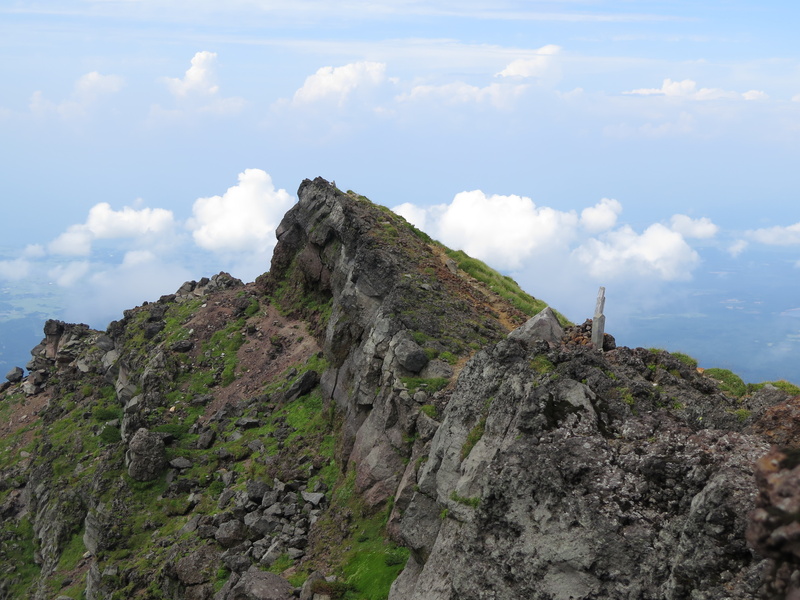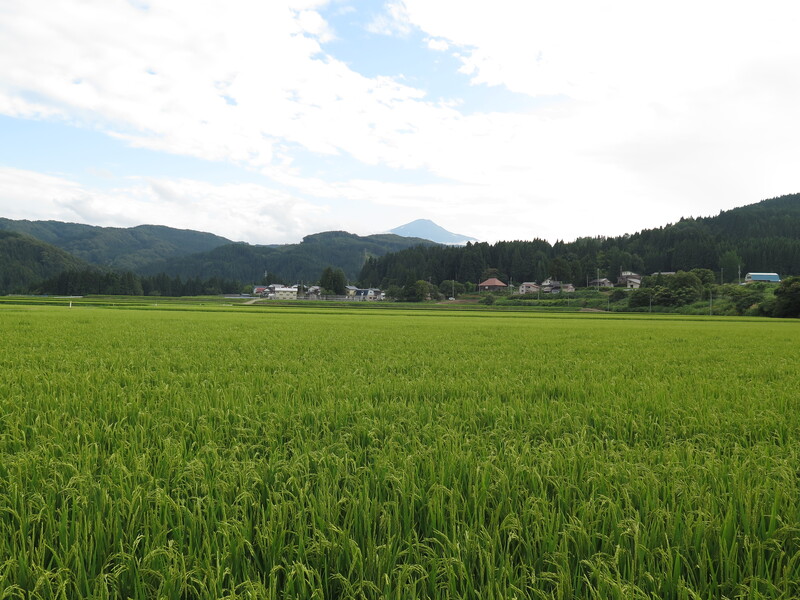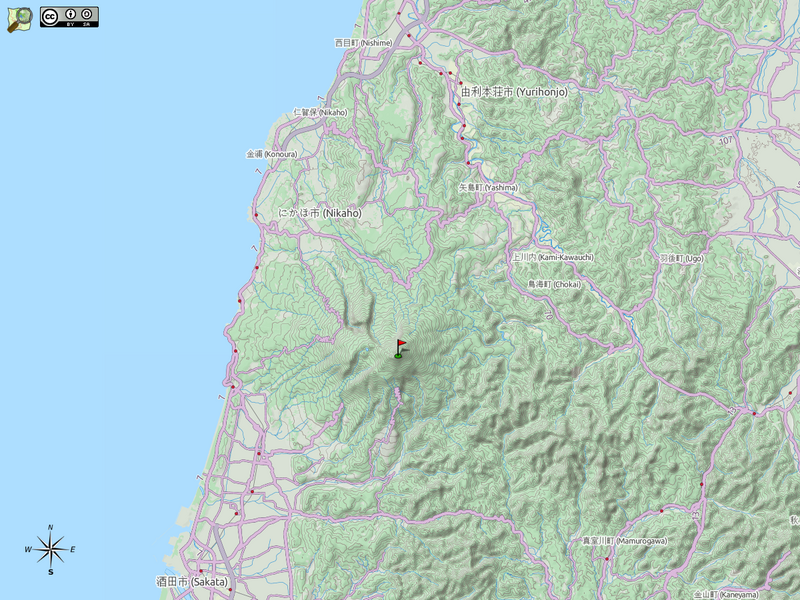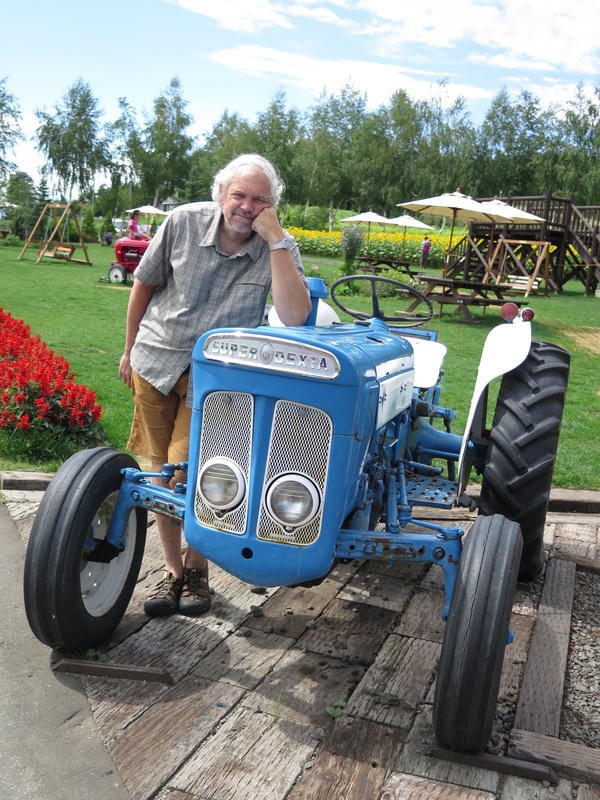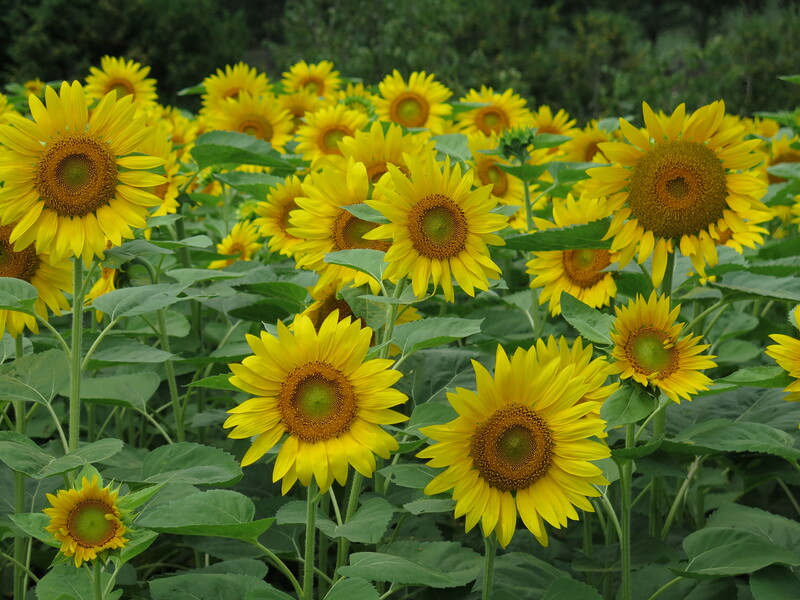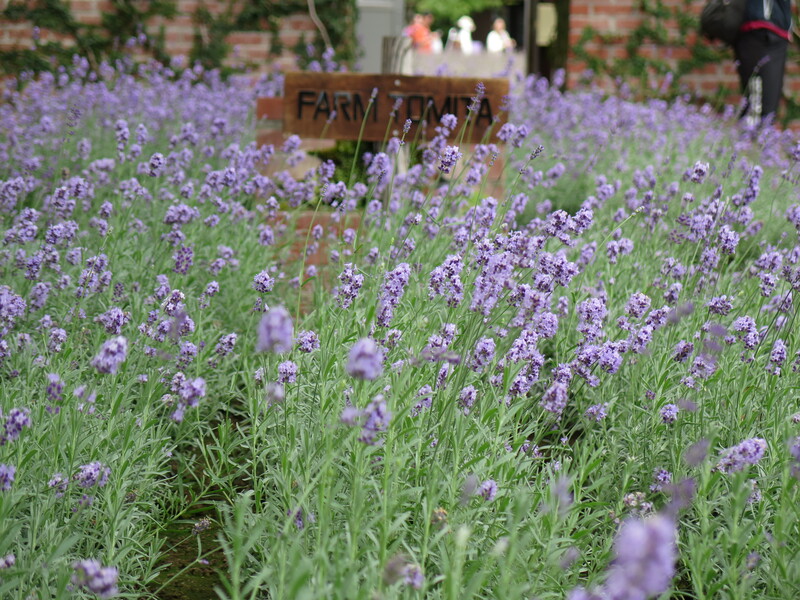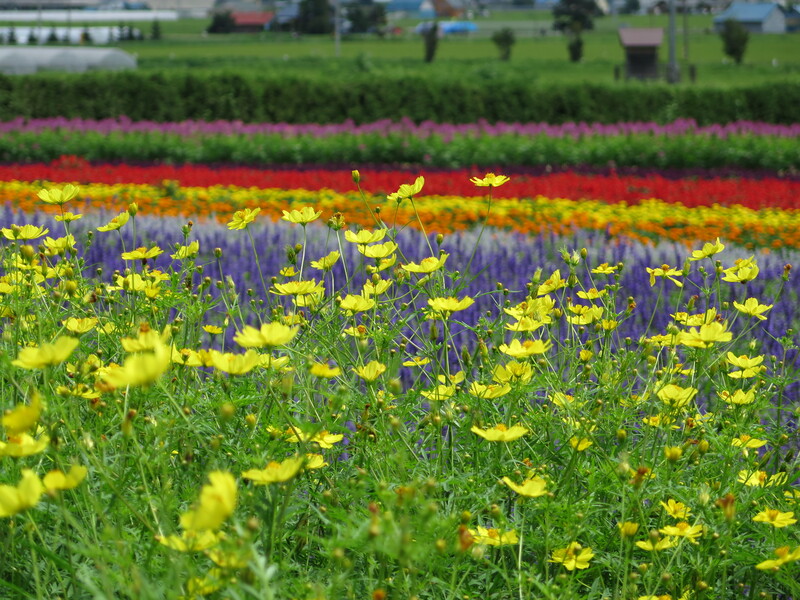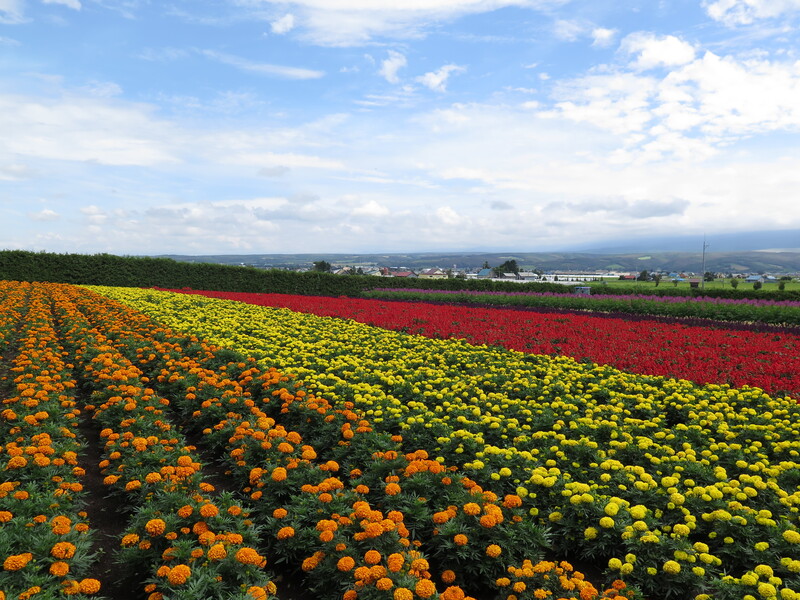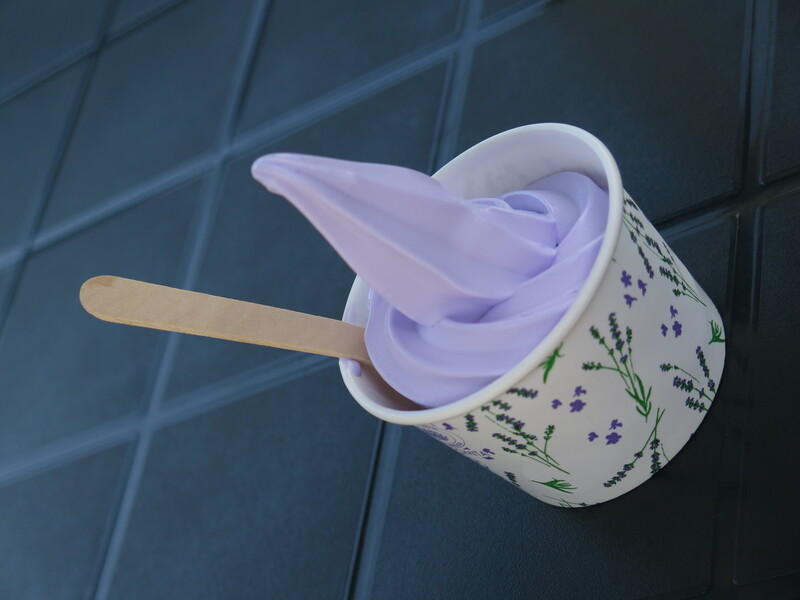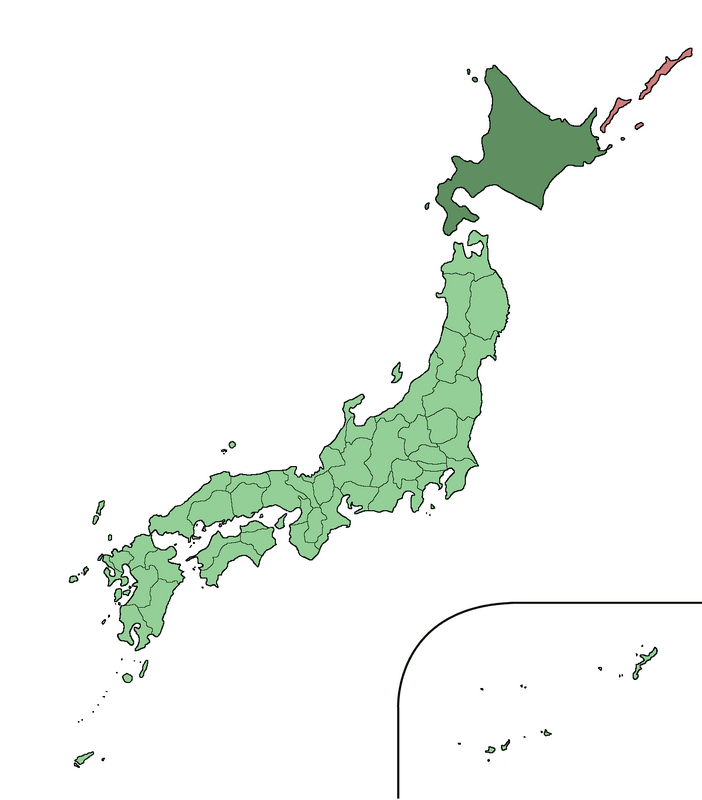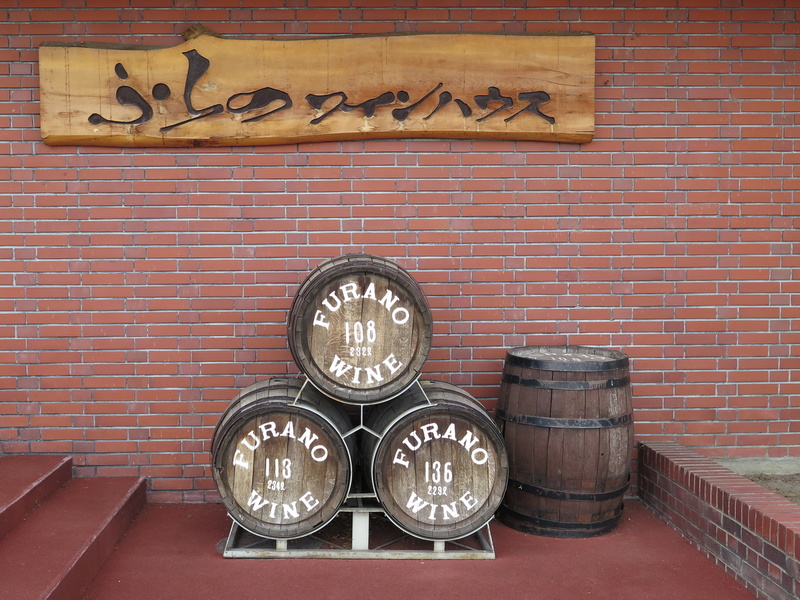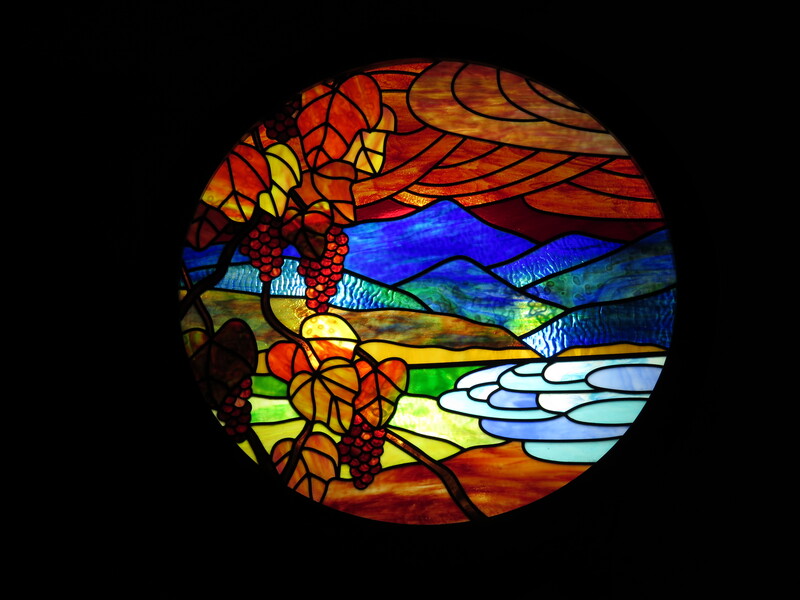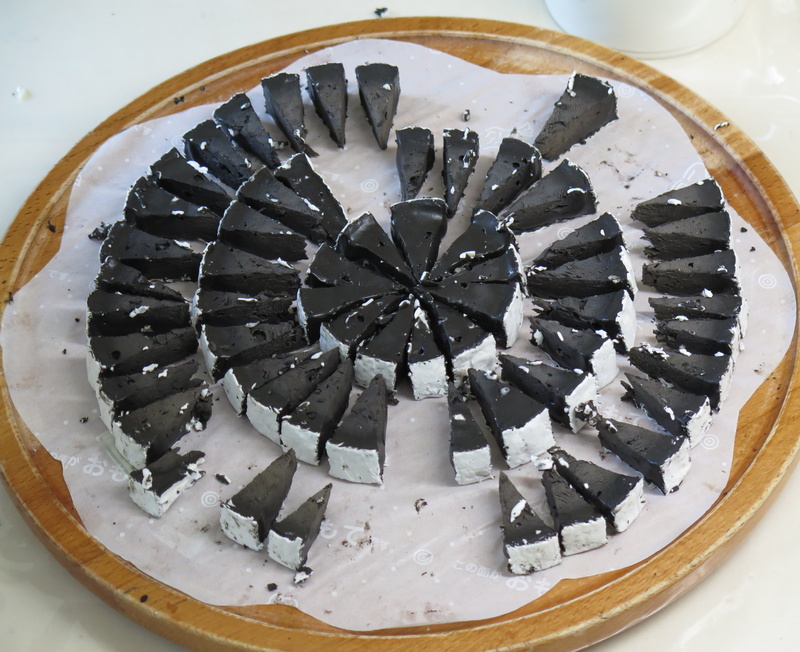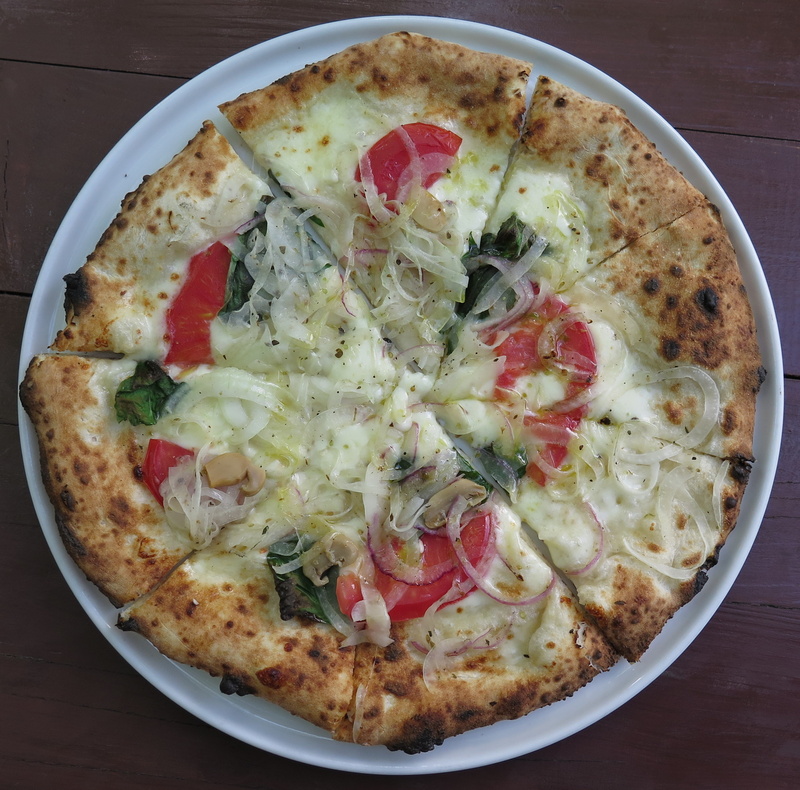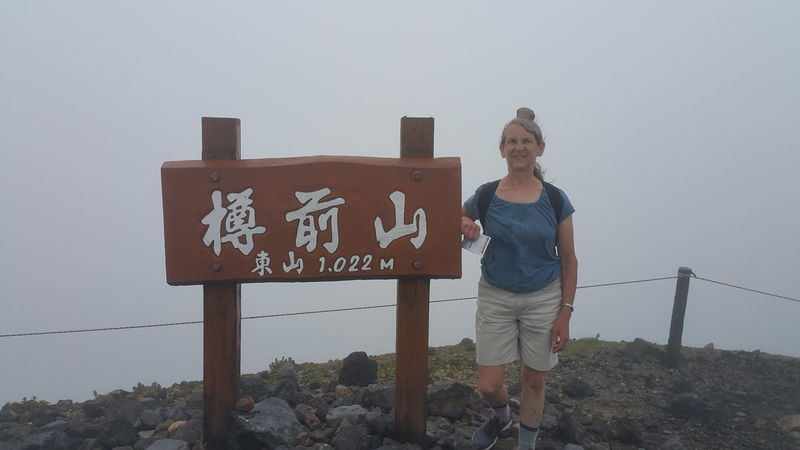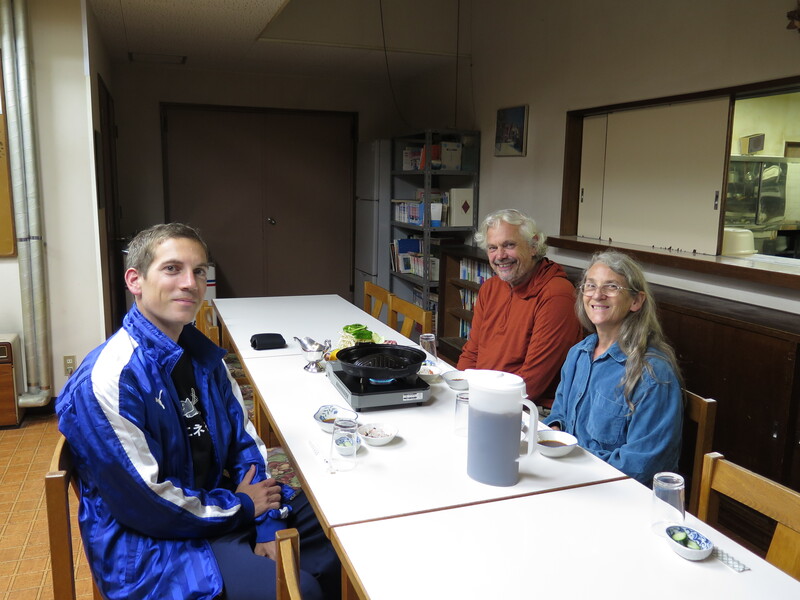South Korea and Japan with Betsy and Dex
2015-08-08
My parents and I traveled for two weeks in South Korea and northern Japan.
South Korea
Our first and last night were at a hotel near Incheon, the airport, because our flights were late and early. There is nothing notable about Incheon, except that renting a car is easy when you're near a rental shop, and rental shops can easily be found at the airport. The airport ATMs were broken, so we had to change money at the counter. Later we found working ATMs at convenience stores and bus stations. The plan for the trip was to head to Sokcho in the northeast, which is notable for its national park, and after that to go to Danyang, in north-central South Korea. Danyang, we read, has magnificent caves. On a more general note, my folks decided that if they were visiting Japan it'd be nice to go somewhere else too, and South Korea seemed like a good option. Also, there is good food to be found.
According to Wikivoyage, Sokcho has a population of around 84,000. It's quite a sleepy city and is known as a gateway to Seoraksan National Park, which is a 30 minute bus ride from the central hub. Also, the DMZ is located an hour north by bus, from the central hub. The city has many beaches and areas to view the Sea of Japan. We went there for the national park. There are many entrances and day hikes in the park. We drove around the whole thing and walked down several trails. Unfortunately, it was too cloudy at high elevations to justify going up to the high peaks. For dinner the first night we went to a place that served squid sundae — a kind of sausage where the exterior is squid and the interior is composed of rice, squid, vegetables, and spices. Good stuff.
Danyang is a small town in the mountains of eastern central South Korea. We had heard it had good caves, and it does. It also has paragliding. You know how you see something that looks awesome and you want to try it? Well, paragliding is about as awesome as I imagined it would be. The outfit we went to does tandem glides which are perfect for beginners. Imagine flying like a bird with views of the steep mountain valleys, rivers, hillside farms and shrines, and the town down below. Paragliding, great.
We had gigantic meals several days in a row. Ordinarily I find that if you order a main dish for each person in the party, you get a good amount of food. That strategy has been ineffective this trip. Instead, we've been getting entirely too much food. On the one hand, we can eat a lot when we try, and I suppose our lunches have been rather light, but on the other hand, it's just a ton of food. Oh well! Good stuff, though. On the second day in Danyang, we went to Ondal Cave in the morning. There is a large fortress complex by the cave, but it was too hot to do much outdoor exploring.
One afternoon we went to Gosu Cave, which is just east of town. To quote Wikipedia, Gosu Cave is a huge limestone cave near Danyang, South Korea formed over 450 million years ago. It is among the best known natural caves in Korea, called the "underground palace" because of its breathtaking natural beauty. Gosu Cave is listed as the country's "Natural Monument No. 256". "Gosu" means "field of tall reeds," and comes from the fact that the area used to be filled with fields of tall grasses. After the cave was discovered in the early 1970s, rough stone instruments were excavated from the cave's entrance, showing that this used to be a home to prehistoric people. Days here have been 90°F and higher, but cave temperature is a much more reasonable 59°F. As such, caves are a nice place to go to beat the heat.
Last night we had more garlic, along with other food, for dinner. Danyang grows ridiculous amounts of garlic, and restaurants reflect that in their dishes. One good thing is that the garlic here doesn't have a super strong flavor. Your standard grocery store is more pungent than this stuff. In the morning, we got up relatively early — around 8AM — and beat the crowds to Cheondong Cave. This cave was the smallest of the three we visited, and it was also the most impressive. We climbed up and down and on our hands and knees. We saw stalactites, stalagmites, and soda straws. It worked out well. After that was the Stone Gate of Danyang, which looks about how you would expect, and then a high speed burn across the country to Incheon for dinner at Korean barbecue restaurant for our last night in the country.
Yurihonjo
After South Korea, we flew to Tokyo and headed north. We took a train to Nasushiobara, seized David's car, and drove to Akita. I used to live here, and many of my friends still do. Sushi is not Dexy's favorite, but he's a good sport and tries everything. Betsy and Dex are doing well eating with chopsticks. Rural Akita is sparsely populated, in sharp contrast with areas to the south. That's nice for hiking and driving back roads through mountain passes.
For lunch the second day, we met Etsuko and Kazunao Mitsumori at the ginger ramen shop. My former student's dad, Mr. Masaka, was there by chance, and he called his son Kimiaki, who joined us for the meal. Kimiaki graduated and is in fire fighter school now. He spoke mostly in English, which was helpful for Betsy and Dex.
On the foothills of Mount Chokai lies the majestic Hottai Waterfall. The waterfall is big and tall. You can go swimming at the bottom of it, or you can walk up the trail to the top and get a view of the valley and river below.
We climbed Mount Chokai on a cloudy day that turned sunny. Our guard was down when the sun came out, and we got red faces and necks. Sunburn aside, it was a fine day. In the evening, we went to Warabeuta, an okonomiyaki place in Honjo, for dinner.
Hokkaido
After visiting Akita, we took the ferry to Tomakomai in Hokkaido. After a night in Sapporo, we drove north around Shokanbetsu-dake. The original plan was to climb it, but we had no time and the rain came, so we had an excellent lunch instead. Or rather, I had an excellent lunch of a seafood rice bowl. Betsy and Dexy had seafood curry and katsu curry, which looked decent enough.
We had three nights in Furano. We stayed at this excellent hostel called the Furano Youth Hostel. Don't let that fool you, though. This place is as good as any hotel. It's up on the hill overlooking the city, the owners cook simple and tasty food with lots of locally grown fresh vegetables, and the building's architecture is bizarre and exciting, as if the owner decided to go crazy with home renovation and build whatever crossed his fancy.
On our first full day, we went to Farm Tomita, a giant flower garden specializing in lavender. It has huge lavender gardens, although so does the rest of town, and it also has some other large gardens with various colorful flowers in great quantities. They sell lavender soft serve ice cream, too. In the afternoon, we made shorter stops at the Furano Winery, to sample some wine, and the Furano Cheese Factory, to sample some cheese and eat pizza. In the afternoon, we walked down some jeep track in the foothills for an hour looking for the bears. We didn't find any, but Betsy spotted a fox trying to catch dragon flies.
It was raining in the mountains, and we went to the zoo instead. The Asahiyama Zoo is Japan's most famous, and rightly so. There are all kinds of big dangerous critters like polar bears, lions, tigers, and birds of prey. The gabons were pretty awesome, too. A juvenile gabon was playing tag with one of the adults, and their acrobatic antics were downright amazing. It must be awesome to swing and jump around on ropes and monkey bars like that.
Our final two nights were at the Shikotsuko Youth Hostel in the center of Shikotsu-Tōya National Park. To quote Wikivoyage, Shikotsu-Tōya National Park (支笏洞爺国立公園) is a national park (983 km2) in the central part of the island of Hokkaido, Japan. There are many lakes and active volcanoes in the park. Showa-Shin-zan, Usa-zan, and Tarumae-zan are the more well known among the active volcanoes. These volcanoes are also responsible for some popular onsens. We went hiking for the afternoon of the first day. It was cloudy but not raining. We had a good walk but no big views.
On the morning of the second day, the weather was uncooperative. Rain. Heavy rain. Dex asked where the nearest Starbucks was, and I said it was in Sapporo to the north. In hindsight, that might not be true. It might be in Tomakomai to the south. But I didn't know that then, and anyway there are more things to do in bad weather in Sapporo, so we went there. We didn't go to Starbucks but instead to a different coffee shop that isn't part of an international chain. This was partly accidental and partly intentional, seeing as how the parking spot we found was right next to this other little place. The coffee was good. After that, we went to the Sapporo Beer Museum for the tour and samples. In the afternoon, we headed over to the Shiroi Koibito Park, a chocolate and cookie museum complex. It's a big place where you can see candy and cookies being made, look at hot chocolate cups from two centuries ago, and buy tasty souvenirs for friends and family back home. Also, we ate chocolate and cake and candy. All-in-all a nice stop for an indoor day.
On the last morning, I took Betsy and Dexy to the airport in Chitose. They fly Chitose to Narita to Minneapolis to Grand Forks. For me it's a ferry ride to Sendai and then a drive back to David's place in Tochigi. This was a good trip, and I may come to Hokkaido again.

